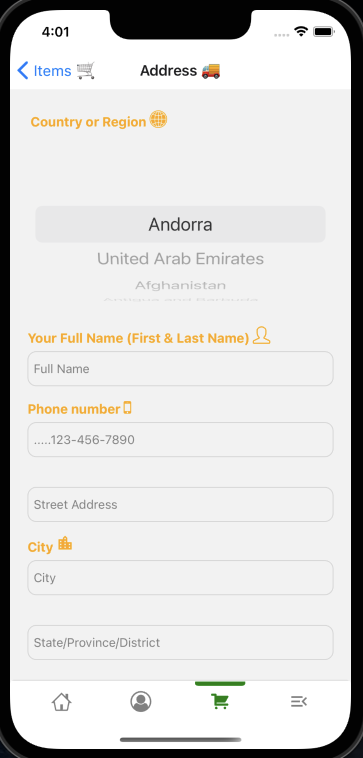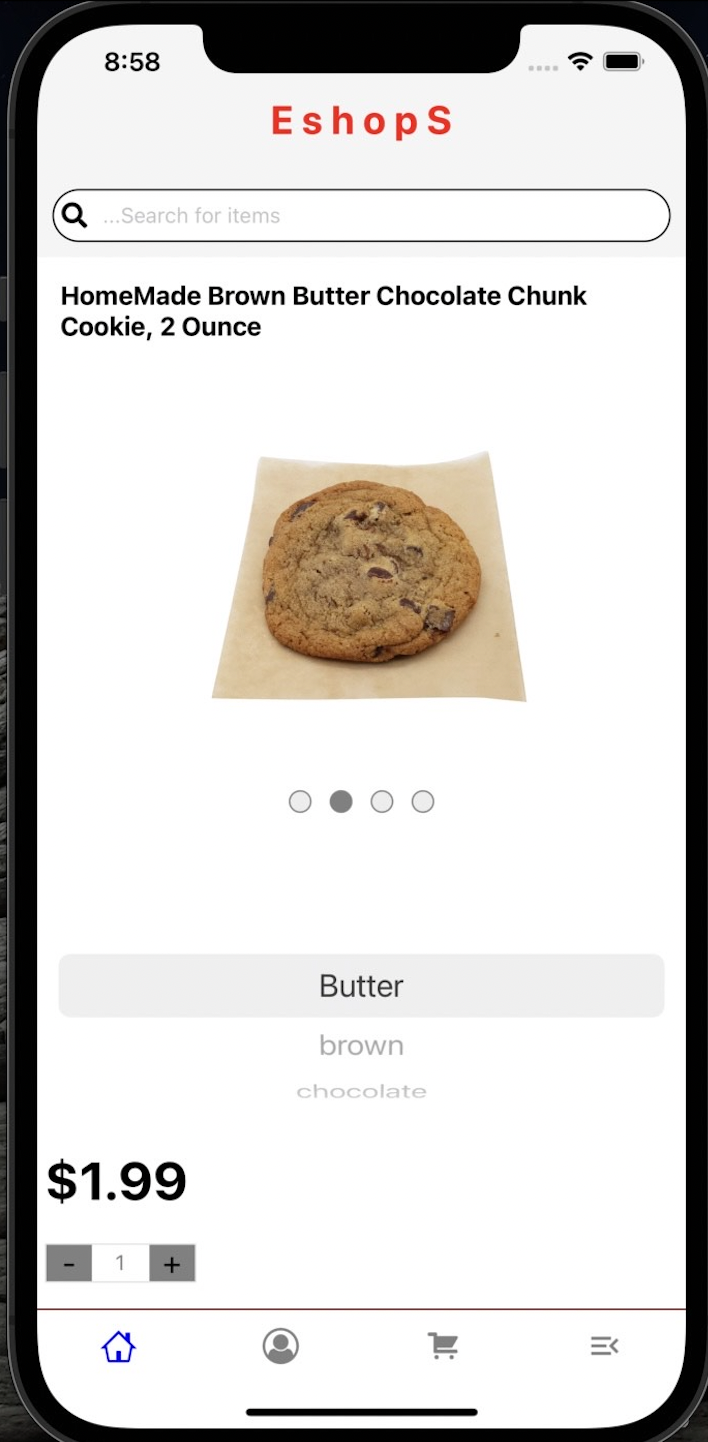Address Screen and Contact Screen React Native
The Address Screen is like filling out a postcard. You have fields for: Street Address: The actual address where someone lives City: The city where they live State: The state they live in Zip Code: Their zip code for mail delivery Country: The country where they live The Contact Screen is like filling out your contact card. It asks for: Name: Their full name Phone Number: The number to reach them Email: Their email address Making it Perfect: Double-check the info: You want to make sure the data is correct. Use little checks and alerts to help people fill in everything correctly. Make it pretty: Use colors, clear fonts, and spacing to make the forms look nice. Give them a helping hand: Offer suggestions as they type their address, or let them pick their location on a map. Why are these screens so important? Many apps need this info, like: Delivery apps: They need your address to bring your food or package. Account creation: They need your contact info to keep track of your account.
With React Native, you can easily build these screens and integrate them into your app. Just remember to be careful with the information they share and make sure it's stored securely.
-
The Woodlands, Texas
- Added by davieasyo
- $61 per hr
davieasyo
Rated: 5 stars
iOS AppStore, AWS, NodeJS, AWS Serverless technologies like Lambda ECS Fargate API Gateway
Setting Up Navigation between screens in Your React Native App.
Moving between different parts of your app should be smooth and natural for your users. That's where navigation comes in! It's like the map of your app, guiding users through different sections. Think of it like a roadmap, making sure everyone finds their way around. React Navigation is the go-to tool for building this navigation system. It's super popular and makes everything super easy. Let's break down how to set it up:
Step 1: Get Ready! First, you need to add React Navigation to your project. Think of it like adding the right tools to your toolbox. Use npm or yarn (your choice) to install the essential components: npm install @react-navigation/native npm install @react-navigation/stack You also need some extra tools: npm install react-native-screens react-native-safe-area-context Step 2: The Command Center Now you need a main hub, like a central control room for all your navigation. This is the NavigationContainer. Place it at the top of your app's main file (usually App.js). Step 3: Creating the Navigation Flow Think of your app as a series of screens. A Stack Navigator is like a pile of these screens, where you can move back and forth between them. Step 4: Linking It All Together Now, connect your navigation stack to the NavigationContainer so that your app knows how to navigate: Step 5: Getting Around You're ready to start moving between screens! React Navigation provides a special tool called navigation to help you navigate. Let's say you want to go from the HomeScreen to the DetailsScreen:
That's it! By following these steps, you've built a clear and easy-to-use navigation system for your React Native app. Your users will thank you for making their experience smooth and enjoyable!
Importance of Address and Contact Screens in Mobile Apps coding with React Native
Think of your address and contact screens like the front desk of your app. They're the first place users go to tell you who they are and where they're located. These screens might seem simple, but they're really important for making your app work smoothly and giving users a good experience.
Here's why these screens are such a big deal: Making it Easy for Users: Nobody wants to spend ages typing in their details. Good address and contact screens make it simple and quick for users to enter their information, whether they're ordering food, booking a ride, or setting up an account. The Foundation of Your App: Lots of apps rely on knowing where users are and how to reach them. Imagine trying to order groceries without giving your address, or a ride-sharing app that can't contact the driver! These screens are key for making your app's core features work. Keeping Things Accurate and Safe: We don't want users getting the wrong delivery or having their personal info stolen! Well-designed screens can help catch mistakes in addresses and contact details, and security measures can keep everything protected. React Native Makes It Easy: React Native has tools that let developers build address and contact screens that look great and are easy to use. They can add features like auto-completion, location maps, and ways to check if information is correct.
In short, address and contact screens are a must-have for any app that wants to be successful. And with React Native, you've got the perfect toolkit for making them awesome!
Using React Native Components: TextInput, Button, etc
Want to make a cool mobile app? React Native is your secret weapon! Think of it like LEGO for building app interfaces. React Native has special building blocks called "components" that help you easily create awesome stuff.
1. The "Type It In" Component: TextInput Imagine you're making a form for your app, like a login screen. You need a spot for people to type their username. That's where TextInput comes in. It's like a magic box where users can type their words. You can even make it super fancy with a "placeholder" to tell them what to type, or make it secure for passwords. 2. The Action Button: Button Now, you need a button to do something when people are done typing, like logging in! This is where Button shines. It's the click-me hero of your app. You can give it a cool title and a snazzy color. And when people click it, you can make it do things like send data, navigate to a new screen, or even trigger an alert! 3. Combining Forces: TextInput and Button Together Want to make your app even more interactive? Put those two components together! Now you can create a form where people type in their login info and click a button to submit it. You can even check their information and give them a fun message based on what they typed.
Key Takeaways TextInput is like a text box where users can type things. You can customize it to look just the way you want! Button is the click-me hero. It makes your app respond to user actions. By putting these components together, you can create really neat and useful apps. These are just a few examples of how these components work. With React Native, you can build all sorts of cool mobile apps! Get creative and unleash your inner app developer!


